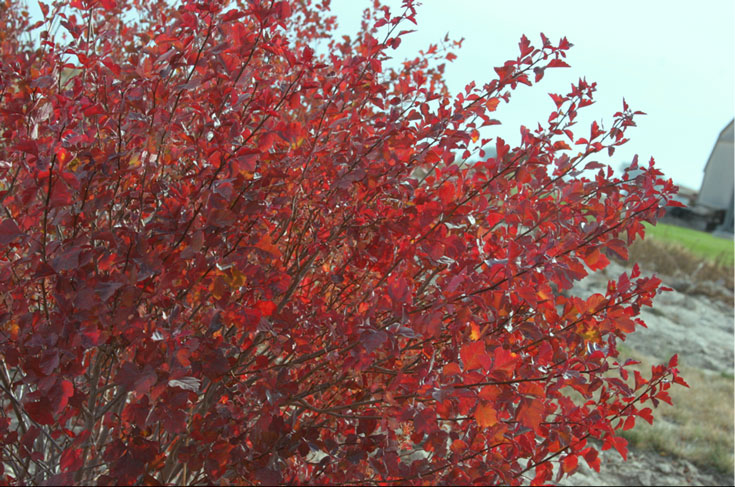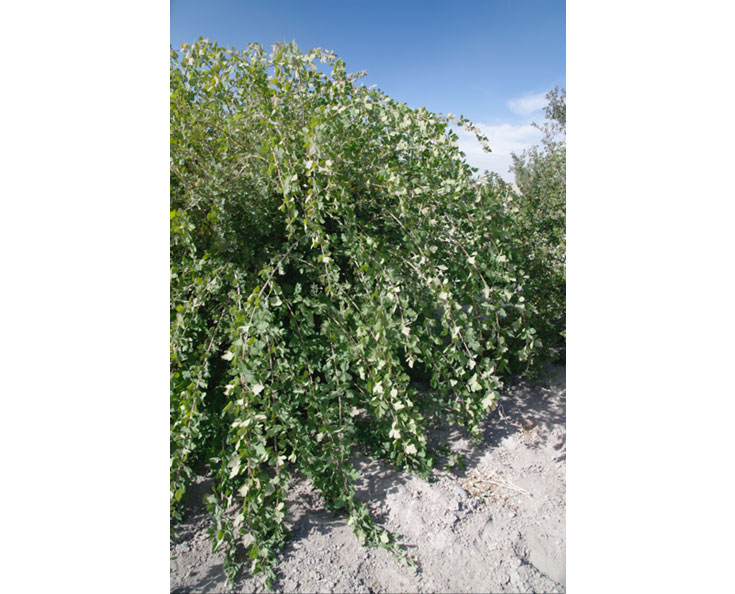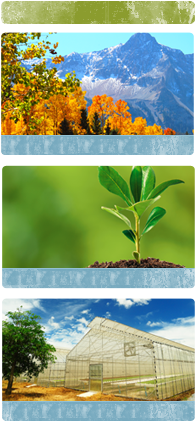Rhus trilobata in the Landscape


Karen Panter, University of Wyoming
Scientfic Name: Rhus trilobataCommon Name: Skunkbush Sumac
Description: Deciduous shrubs, usually with separate male and female plants (dioecious). Skunkbush sumac can reach 5 feet in height and as wide, often forming large patches due to its suckering nature. Flowers are yellowish in color but not showy. Female plants produce bright red fruits in the fall which may stay on the plants well into winter months. Foliage is trifoliate and glossy, dark green on the upper side. Foliage turns orange to red to reddish purple in fall.
Native Habitat: Skunkbush sumac is native to the states west of Iowa and Arkansas. It is generally found on hills and slopes where soil drainage is best; this species prefers acidic soils.
Cultural Requirement
Soil: Deep and well-drained. Soils with neutral to slightly acidic pH are preferred.
Moisture Tolerance: Avoid keeping too wet.
Sun/Shade/Preference: Full sun to part shade.
Transplanting: Easy.
Propagation: Division using suckers. Seeds typically require scarification for about 60 minutes in sulfuric acid. Then either sow the seeds in the fall outdoors or provide 2 months stratification at about 40F. Softwood cuttings taken in July and treated with 1000 ppm indole-butyric acid (IBA) rooting hormone are also successful.
Maintenance (pruning, fertilization, deadheading, division, irrigation, etc): Remove unwanted suckers periodically. Low to moderate fertilizer and water requirements.
Insect, disease, or other problems: None of major importance. Problems that have been reported on occasion include wilts, leaf spots, rusts, mites, aphids, and scales.
Landscape Value
Use in the Landscape: Very attractive shrubs especially for fall and winter color. Allow plenty of space as they will form dense thickets. Can be used to form low hedges. Mass them together for greatest effect.
Weediness/Invasive Potential: None of concern.
Foliage: Leaves are alternate, divided into three leaflets and are glossy medium to dark green. Fall colors are brilliant yellow to orange to red. Foliage produces a somewhat unpleasant odor when touched, thus the name “skunkbush.”
Flower: Inconspicuous and usually greenish-yellow. Plants are typically dioecious (male or female).
Timing: June, July.
Fruit: May produce a red or scarlet drupe, containing one seed. Seeds are eaten by a number of bird species.
Form: Small to medium-sized shrubs. Usually forms dense patches.
Texture: Medium to coarse.
Ultimate Size: 5 feet tall by the same wide.
Rate of Growth: Medium to fast.
Suggested Plant Partners: Sumacs require a fair amount of room. Would not suggest planting too close to other landscape plants.
Availability: Readily available from most larger nurseries, usually in containers, sometimes balled-and-burlapped.
Cultivars: A common skunkbush sumac cultivar is ‘Autumn Amber’ which only reaches about 18 inches tall and spreads 6 to 8 feet.
References:
Dirr, M.A. 1998. Manual of woody landscape plants. Stipes Publishing Company, Champaign, Illinois.
Dorn, R.D. 1992. Vascular plants of Wyoming. 2nd edition. Mountain West Publishing, Cheyenne, Wyoming.
Hartmann, H.T., D.E. Kester, F.T. Davies Jr., and R.L. Geneve. 2011. Hartmann and Kester’s plant propagation. 8th edition. Prentice Hall, Upper Saddle River, New Jersey.
Sunset Western Garden Book. 2001. Sunset Publishing Corporation, Menlo Park, California.
USDA-NRCS Plants Database. https://plants.sc.egov.usda.gov/java/. Accessed 18 October 2019.Photos courtesy of Stephen Love, University of Idaho.

